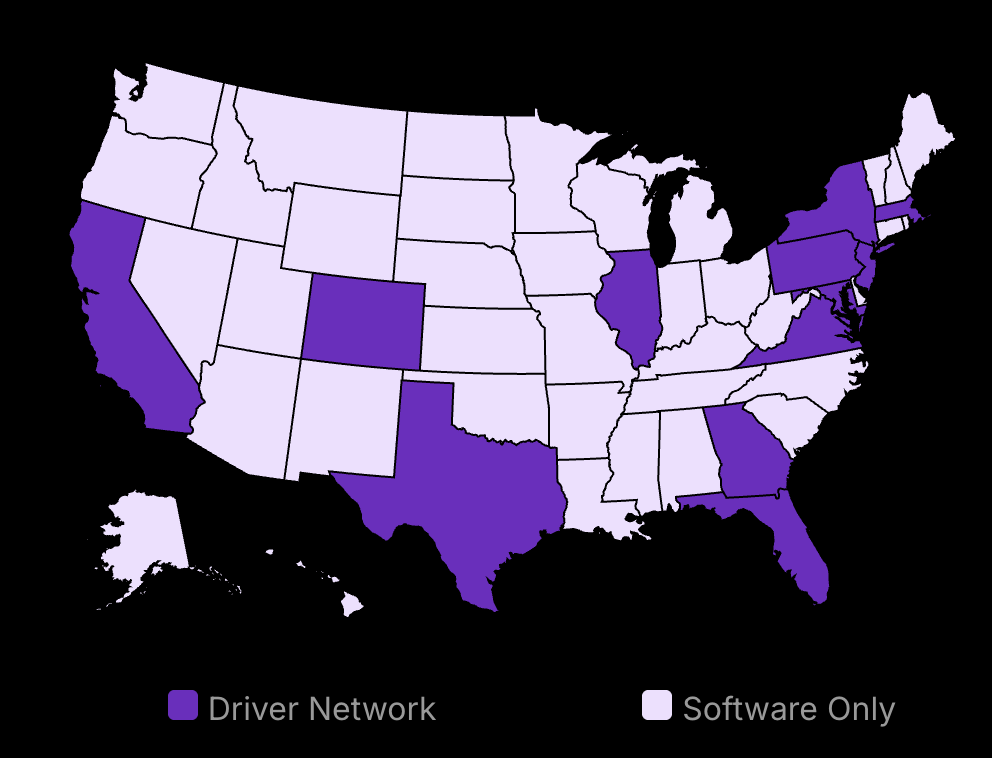Starting an ecommerce business in 2025? Buckle up.
Despite the burgeoning market, not all ecommerce ventures float. About 90% tend to sink. This citation isn’t an attempt at fear-mongering – it’s a wake-up call. Your ecommerce ship doesn’t have to be a part of this statistic. Steering it out of perilous waters and into the profitable sea isn’t an impossible task, provided you’re equipped with the right know-how.
This comprehensive guide, then, is your seasoned skipper, shedding light on the essential steps to start an ecommerce business from scratch. Navigating the complexities and nuances of starting an online enterprise will no longer seem akin to groping in the dark.
Average Online Shopping Cart Abandonment Rate:
In a study by the Baymard Institute, the average online shopping cart abandonment rate stands at 70.19%, based on data from 49 different studies on e-commerce.
Primary Factors Behind Cart Abandonment During Checkout Process:
The primary factor leading to 47% of online shoppers abandoning their carts is the presence of extra expenses such as shipping fees, taxes, and additional charges. And, %25 of online shoppers opt out of completing their purchase due to the website requiring them to create an account.

Metrobi drivers are rated 4.97 out of 5
Trusted by local businesses for:
- Background-checked professionals
- Specialized in business deliveries
- Same drivers for consistency
- 4.97/5 average delivery rating
How to Start an Ecommerce Business:
Step-by-Step Guide
Step 1: Crafting Your Ecommerce Business Plan
Business planning is the foundation of success. Think of your ecommerce business plan as a GPS – guiding your decisions and keeping you on track. What should the plan include?
Perform Market Research
Uncover valuable insights about your target customers, competitors, and industry trends. Knowing who your customers are, what they want, and how your competitors are meeting these needs helps you identify opportunities and your target audience.
Product Definition
Elucidate what products or services your ecommerce business sells, your business idea, the competitive research, your product ideas and quality, and the market demand. This includes the pricing strategy, unique selling propositions, and sourcing or manufacturing method.
Financial Plan
Plan your startup costs, sales projections, operating expenses, marketing costs, key performance indicators, and revenue predictions. Consider seeking the assistance of a financial advisor or personal loans.
Step 2: Choosing the Right Ecommerce Platform
When planning is done, it’s time to pick the ideal platform for your ecommerce store. The right choice depends on factors like:
Scalability
Your ecommerce platform should grow with you, so consider how it will handle increased traffic and sales as your business expands.
Customizability
Find an ecommerce website builder that’s flexible enough to accommodate your needs. Whether you prioritize design capabilities, social media marketing, or diverse payment options, make sure your selection checks all your specific boxes.
Price
Determine what you can afford. Remember that your total cost will include not only the price of the ecommerce platform, but also the cost of any desired add-ons, transaction fees, marketing efforts, shipping costs, and potential development costs.
Step 3: Setting Up Your Ecommerce Store
An online store set up properly means half the battle is won. Here’s how to do it:
Design Your Store
Create an intuitive, visually captivating design that aligns with your brand identity and brand identity. Good design increases customer trust and drives conversions.
Product Pages
Ensure your product pages are informative and user-friendly. Besides crisp images and pricing details, provide comprehensive product descriptions, reviews, and FAQs.
Checkout Process
A smooth checkout process decreases cart abandonment. Make yours simple and speedy. Include multiple payment options and clearly communicated shipping costs. Also, integrate shipping label printing into your ecommerce website to streamline the entire fulfillment process.
You’ve now got the key elements to launch your ecommerce business successfully. However, merely launching the business isn’t enough, you’ll need a strategic marketing plan to propel it to success. Stay tuned for concrete strategies to take your business to the next level.
Essential Ecommerce Marketing Strategies for Success
Moving ahead after setting up your ecommerce store, appropriate marketing strategies must be deployed to ensure success. These are not just about attracting attention but converting it into actual sales. SEO, Social Media, and Email Marketing, when done right, make a robust combination that can help you achieve your business goals and reach your target market.
SEO for Ecommerce
Search engine optimization is not just a buzzword among digital marketers. It’s the driving force behind visibility on search engine result pages.
SEO is the technique that helps your ecommerce business website attract search engines like Google. SEO blog writing services enhance your content strategy and boost visibility, increasing organic traffic.
Importance of SEO
When online customers seek a product, they often go to a search engine for solutions. %75 of internet users do not venture beyond the first page of results, making it imperative for you to rank high in searches. This can help you reach your potential customers across the globe and increase your ecommerce sales.
SEO for E-commerce is not just about bringing countless visitors, but bringing the right visitors who are likely to become customers.
The Conversion Power of SEO:
Leads generated through SEO efforts exhibit a conversion rate of 15%, highlighting the effectiveness of search engine optimization in driving qualified prospects to conversion.
Social Media Marketing
Social media has transformed from just a platform for personal communication to an effective tool for businesses. It now caters to a total number of 4.95 billion active users worldwide.
Social Media Persuasion:
Nearly half of all purchases (%40) are directly influenced by social media platforms, indicating the significant sway these online channels hold over consumer decision-making processes.
Top Choices for Marketers and Consumers:
83% of marketers use Facebook for audience reach and competitive analysis. 60% of consumers prefer brands to use Facebook more. Instagram is the second favorite platform for both.
Advantages of Social Media Marketing
One of the most enticing aspects of social media marketing is the potential for interaction. It provides an immediate and direct connection to customers and potential new customers, turning your business into something more human and relatable. By sharing updates about new products, discounts, and more, you keep your audience engaged and interested, thereby promoting loyalty toward your brand.
The Impact of Influencers:
%49 of social commerce shoppers report that their purchasing decisions have been directly influenced by recommendations from influencers.
Email Marketing
Despite the proliferation of numerous digital marketing platforms, email remains one of the most efficient methods to reach out to your customers.
The Impact of Email Marketing
Email marketing offers you a direct line to your customers at a relatively low cost. It has been found that for every $1 spent on email marketing, you can expect an average return of $38, making it an incredibly cost-effective business strategy, with an impressive ROI.
With a well-crafted email, you can personally reach out to your customers, inform them of new products or discounts, and bolster your relationship with them.
With these strategies employed effectively, move a step closer to nurturing your E-commerce business, driving meaningful customer engagement, and boosting conversions and sales.
Legal Considerations When Starting an E-commerce Business
As firm foundations of a successful e-commerce venture, legalities demand serious attention.
Choosing the Right Business Model
Deciding upon your legal business structure is the initial step in starting an e-commerce business. Choose the legal structure for your ecommerce company and your business name. This includes the business finances, cash flow, financial projections, and upfront costs. It determines your liabilities, paperwork, and tax obligations. The common business structures include Sole Proprietorship, Partnership, Limited Liability Company (LLC), and Corporation. Each has its pros and cons, so understand them and choose wisely. Equally crucial to your success, drafting a comprehensive business plan for ecommerce will guide you in managing projections and financial planning for your online venture.
Understanding E-commerce Laws and Regulations
Compliance with e-commerce laws is crucial to maintain your business’s legitimacy and to avoid legal disputes. Key issues involve privacy, security, copyright, and sales tax. Some countries also have specific e-commerce regulations which you need to consider.
Privacy Laws
Privacy laws regulate how businesses collect, use, store, and destroy customer data. GDPR in the EU, CCPA in California are among the known privacy laws that can impact your e-commerce business. If you aren’t aware of these laws, it can lead to lawsuits and penalties.
Security Laws
Data breaches can destroy your business reputation overnight. Customers trust you with their details; breaking that trust can lead to your demise. That’s why regulations like PCI DSS in the US exist that lay down security standards for businesses dealing with credit card payments.
Security Concerns:
19% of online shoppers leave the cart during the checkout process because they do not trust the site with their credit card information.
Navigating Intellectual Property Rights
Intellectual property (IP) laws shield your unique products, designs, and innovations. Understanding the basics of trademark, copyright, and patent laws can help safeguard your e-commerce business against theft and infringement and prevent you from infringing on the rights of others.
With these legal considerations in mind, you’re well on your way to launching a legally compliant e-commerce business. Remember, when it comes to legal matters, prevention is better than cure.
Importance of Customer Service in An Online Business
Providing excellent customer service is essential to ensure customer satisfaction and retain customers. This includes responding promptly to their queries and complaints, offering refunds and returns, and shipping products on time.
Superior Customer Service as a Sales Booster
Investing in high-quality customer service isn’t just about retaining clients—it’s a powerful strategy to drive more sales. With a team trained to show empathy and understand your customers’ needs, you can turn issues into opportunities. Ask questions and listen actively—they may have pain points you didn’t know existed, such as concerns about AI photography features in your products, and addressing these can lead to an increase in sales.
Satisfaction, Loyalty, and Customer Service
1 in 3 customers will leave a brand they love after just one bad experience, underscoring the importance of excellent customer service on brand loyalty. Satisfied customers won’t just stick around, they’ll also recommend your brand to others. “Word of mouth” remains a powerful advertising tool and garnering a reputation for excellent customer service can earn you enthusiastic brand ambassadors for free.
Devising an Effective Customer Loyalty Program For Your Online Store
Successfully implementing a customer loyalty program can further boost your retention rates. Rewards and special features for regular customers can foster a strong sense of loyalty. But remember – the foundation of any loyalty program should still be top-quality customer service.
Masterfully Handling Customer Complaints
Crafting an efficient process for handling customer complaints is vital in the e-commerce industry. Swift, appropriate responses can salvage potentially damaging situations, turning a disgruntled customer into a satisfied one.
Escalation Procedures
Without appropriate escalation procedures, minor issues can balloon into major problems. Ensuring your customer service team knows when and how to escalate issues can prevent a customer’s dissatisfaction from spiraling out of control.
Remember, customer service isn’t just a cost center—it’s a critical investment that pays dividends in sales, customer loyalty, and overall satisfaction. The best product or platform, without a team dedicated to customer happiness, might struggle to compete in the fast-paced and competitive world of e-commerce. Make your customer service a distinguishing feature of your online business and expect to enjoy the rewards.
Common Challenges in Ecommerce and How to Overcome Them
Unpredictable Customer Behavior
The arena of e-commerce business largely depends upon decoding the customer’s behavior.
The buying decision of consumers often depends on various factors – price, product quality, brand reputation, and much more. Hence, their purchase decisions might appear random and unpredictable. Inaccurate prediction of customer behavior can lead to overstocking or understocking of certain products, thereby affecting the profitability of your e-commerce business.
However, you can tackle this issue by using data analytics tools with predictive modeling features. Such tools consolidate and analyze data from multiple sources to anticipate customer behavior. Consequently, with these insights, e-commerce businesses can plan their inventory and marketing strategies more effectively.
Security Concerns
Every year, millions of dollars are lost due to online fraud and cyber attacks. Cybersecurity remains a crucial concern for e-commerce businesses. As businesses thrive on customer data, the vulnerability to security breaches increases. Using insider threat solutions can help reduce these risks by spotting and dealing with potential threats from within the company, keeping your data and money safer.
It’s also important to train the team thoroughly, providing them with resources like CS0-003 exam dumps to strengthen their cybersecurity skills and enhance their ability to protect sensitive information effectively.
Consequently, e-commerce businesses are tasked with the crucial responsibility of safeguarding sensitive customer data, such as their credit card information or personal identification data. Any misstep regarding security could lead to substantial financial losses and, more importantly, a decline in customer trust, which is pivotal for any e-commerce business.
Broadly speaking, there are a couple of ways to mitigate these risks. Firstly, always ensure that your e-commerce platform is up-to-date with the latest security patches. If not, you can always switch to a more secure and flexible platform through ecommerce replatforming. Secondly, opt for secure payment methods and invest in sturdy encryption for data transmission. It is also prudent to educate your customers about safe online shopping practices.
Return and Refund Policies
Guaranteeing customer satisfaction is not always a clear path. Customers might not always be satisfied with their delivered product and may request returns or refunds – this is an inevitable operation in the e-commerce world. A badly managed return procedure could lead to decreased customer retention rates.
Crafting a clear return and refund policy is an advisable strategy. The policies should be unambiguous, transparent, and easily accessible to the customers, making sure there are no hidden clauses. In addition, efficient automation of the return process makes it faster and less error-prone.
In conclusion, while e-commerce brings along its unique set of challenges, they are not insurmountable. Weathering these challenges successfully is a determinant of your potential for higher profitability and long-term success in this dynamic materializing business sphere.
What is Ecommerce and Why is it Important?
Although E-commerce can seem overwhelming due to the challenges we’ve discussed, it boasts significant opportunities, specifically in terms of revenue generation, business expansion, cost savings, and new customer acquisition.
🔹 E-commerce is a revolutionary model of conducting business
🔹 Plays a significant role in today’s global economy
🔹 Understanding its importance helps in making better strategic decisions for your business
Defining Ecommerce
E-commerce, which stands for electronic commerce, is the practice of buying and selling goods and services over the Internet. Its advent has undeniably changed the traditional way of conducting business, allowing organizations and individuals to operate beyond geographical boundaries.
The simplified process of online buying has led to soaring e-commerce popularity. It starts when customers place an order on your digital platform; they get multiple payment options to choose from. After making a successful payment, they can sit back, and the product will be delivered to their doorstep.
With access to the internet and smart devices increasing globally, E-commerce provides an enormous customer base that spans across continents. It’s an opportunity for businesses to reach out to an unprecedented number of potential customers with personalized offers, without investing in physical stores.
Types of Ecommerce
Understanding the variety of E-commerce forms is crucial to determine the right model for your planned business. There are four main types: B2B (Business to Business), B2C (Business to Consumer), C2C (Consumer to Consumer), and C2B (Consumer to Business).
B2B involves transactions carried out between businesses; B2C is where businesses sell to consumers, C2C is where consumers sell to other consumers generally through platforms like eBay, and Etsy; and C2B, a less frequent but innovative model, involves consumers providing services or products to businesses.
Recommended reading: What to sell on Etsy?
The Importance of Ecommerce
E-commerce has become a cornerstone in the business world due to its inherent ability to demolish logistical and geographical obstacles. It offers an array of benefits to both businesses and customers, catapulting its importance in today’s global economy.
Traditional brick-and-mortar shops have their limitations; they can serve a limited geographical area and cater to only a certain number of customers per day. E-commerce, however, amplifies a business’s outreach, allows 24/7 selling, and provides detailed customer data for optimized marketing, translating into a mighty increase in sales and profitability.
Moreover, E-commerce has leveled the playing field in the market by providing small and medium enterprises the opportunity to compete with giant corporations at a fraction of the cost.
Customers also benefit from the convenience of shopping at home, broader product selection, easy comparison of prices, and the personalization that E-commerce offers.
The Future of Ecommerce
Predicting the future of E-commerce is challenging due to its dynamic nature. However, given its growing significance and the rise in digital buyers, it’s safe to say E-commerce is here to stay.
Emerging technology trends like AI, machine learning, augmented reality, and drone delivery are all set to further revolutionize E-commerce, making it more efficient, customizable, and user-friendly.
E-commerce’s future also lies in tapping into untapped markets, particularly in developing countries, and capitalizing on mobile commerce, currently the fastest-growing E-commerce segment.
Future Forecast of the Market:
In 2024, it is anticipated that the worldwide e-commerce market will reach a sum of $6.3 trillion in value.
Case Studies of Successful Ecommerce Businesses
Despite the digital shift, e-commerce entrepreneurship is not a walk in the park. It presents its own set of unique challenges. 1 in 4 e-commerce businesses don’t overcome these obstacles. However, there are plenty of success stories that provide valuable lessons for any aspiring e-commerce entrepreneur.
Let’s dissect those stories.
Amazon: The Power of Customer Centricity
Possibly the world’s most recognized e-commerce company, Amazon has built its empire through an unwavering focus on customer satisfaction.
Amazon first started selling books online. They could’ve stagnated there. Instead, they pushed for diversification. Today, they sell just about anything you could imagine — from electronics to food items.
Amazon Dominates E-Commerce Market:
Amazon holds the largest market share among all e-commerce companies, accounting for 37.6% of e-commerce sales.
The rise of Amazon could be attributed to its mission to be the “most customer-centric company”. They’ve created various exponential growth mechanisms to cater to fluctuating customer needs. From reviews, ratings, and suggestions to the dynamic marketplace, everything is geared toward customer satisfaction.
Amazon As The Most Downloaded Shopping App in the US:
In 2022, Amazon emerged as the top-rated shopping application in the United States with a whopping 35 million downloads.
Innovations Driven by Customers’ Needs
One clear demonstration of Amazon’s customer-centric approach is the creation of Amazon Prime. Frustrated with slow shipping times? Amazon Prime offers fast, free shipping. Want entertainment? Prime Video delivers. This service is continuously shaped to accommodate customers’ evolving needs.
In the e-commerce business, understanding and responding to customers is the key. Amazon illustrates this principle exceptionally well.
Alibaba: Revolutionizing Retail through Technology
Alibaba, another e-commerce giant, credited its success to its technology-driven approach to retail and supply chains.
Alibaba’s strategy was simple yet brilliant – connecting small to medium-sized businesses to potential customers. Where there were gaps in the supply chain, Alibaba filled them in with efficient systems and processes.
Reinventing E-commerce Through Platform Model
Alibaba didn’t just create an online store—they developed a platform. They revolutionized B2B e-commerce. They’ve brought together different stakeholders – from buyers, and sellers, to third-party service providers. This platform model has been a crucial component of Alibaba’s success, proving the power of connectivity and collaboration in e-commerce.
AliExpress: Connecting Sellers and Global Shoppers:
AliExpress, a subsidiary of Alibaba Group, serves as the vital conduit connecting third-party sellers with consumers worldwide. Between July and December 2023, it averaged 431 million monthly visitors, totaling 2.9 billion. This number peaked with 519 million hits worldwide in November.
Each business story illustrates different strategies, reminding us that there’s no ‘one-size-fits-all’ approach to e-commerce. And as we explore these narratives, remember the journey is as pivotal as the destination.
Your Ecommerce Adventure Starts Here
2025 could be the year your e-commerce dream becomes reality. With proper planning, embracing technology, reliable suppliers, and a standout customer experience, you’re on the right path to success. Ready to uncover the secrets of online sales success? Dive into our comprehensive guide, which illuminates the pathway from product selection to leveraging digital marketing for unparalleled growth.
This journey won’t be straightforward, but the rewards are immense. Imagine being a key player in the $4.5 trillion global e-commerce market, serving customers worldwide, and growing a brand from scratch. Each challenge you overcome is another step towards that goal.
Now it’s time to go one step further. Ensure your business plan is ironclad. Research your desired market in depth. Connect with potential suppliers and invest in user-friendly e-commerce platforms. Start creating persuasive and engaging content to connect you with your audience.
And what’s the one thing that makes your e-commerce business stand out among the rest? I’d love to hear your unique value proposition.
Remember, launching e-commerce isn’t the end; it’s merely the beginning – your gateway to an exciting world of infinite potential. Now hustle, iterate, and develop. Your dreams are just a click away.



























